
Review: Vivi Wireless Presentation System
A SaaS-sold, Oz-designed wireless presenter leaps out from a crowded field.
Vivi is the launch product from the Melbourne-based technology company of the same name. The product is a wireless presenter platform. Nothing new there, you might say. Well, this one stands out from its many rivals. Not only is Vivi designed to do way more than most competitors, it is also marketed in an entirely new way.
Wireless presenters are a hot product category right now with a huge take-up across many market sectors. With smartboards and touchscreens supplanting black and whiteboards in virtually every classroom from preschool to university, and teachers now toting tablets rather than textbooks, the demand for foolproof, cable-free video connection has exploded.
The Holy Grail is to create a product that will allow any user device – computer, tablet or smart phone; with any operating system – iOS, Android, Windows or Mac; to connect wirelessly to the display. But that’s easier said than done. One huge challenge is keeping up with the relentless upgrade cycle of the multiple platforms. Will the next version of Airplay; Chromecast; Miracast; WiFi (or whatever) still be compatible with the product you build today?
Vivi has not only sidestepped that problem but has created a platform that opens up a range of completely new features. In a move that clearly puts Vivi at the crest of the new wave in AV; the product is sold as ‘Software-as-a-Service’ (SaaS), a model that is spreading like wildfire among the new breed of buyers whose background is in IT, rather than AV.
While Vivi is currently configured as the familiar small-format processor designed for mounting behind an LCD or atop a projector, you don’t actually ‘buy’ the box itself. Instead, the box essentially comes free when you buy a licence to use the Vivi service. While this is a new concept to some, the upsides of predictable ongoing costs, constant feature upgrades and included hardware maintenance are very attractive to IT departments.
IN THE BOX
My Vivi review unit came neatly packed in a tiny box accompanied by a separate plug pack power supply. The elegant machined metal case is roughly 125mm long and 80mm wide and at just under 30mm deep, it should fit neatly behind virtually any wall-mounted monitor or atop a ceiling-mounted projector.
The connection panel has a coaxial DC input, an Ethernet jack and an HDMI output, along with a pair of USB-A sockets. A recessed reset pushbutton on the top and a slot for a Kensington lock complete the minimalist layout. Inside the box is a metal mounting plate and a USB key containing Mac and PC versions of the Vivi app.
HOOKING UP
Vivi doesn’t come with a printed manual but just before my review device arrived I received an email outlining the setup procedure, including a link to the online Admin guide, and inviting me to book a phone support session to get everything running.
Out of the box, I powered up the Vivi unit, connected an HDMI monitor and patched in a network cable from my home office router. Vivi needs internet access to set itself up, so the first order of business is to configure the box to suit your network. In my simple network very little needed to be done. The unit picked up an IP address via DHCP and was on the network right away.
The next step was to log into the Vivi Central website. Here you can access all the Vivi boxes registered to your organisation and assign their locations, user permissions and more.
Finally, to start using the device, you need to download the Vivi app and install it on any device that you want to use with the presenter box. I installed the app on my PC and also on my iPhone and an iPad for testing. The process was swift and painless.
PRESENT MY SCREEN
With a PC connected to the same network as the Vivi box, opening the Vivi app presented some simple choices. Clicking Present My Screen initiated a stream to the connected display. You can pause the stream, which freezes the picture on the monitor and allows you to do things on your device without everyone watching, and then restart it once more.
The maximum resolution is 1920×1080 at 30fps and, at least on my network, latency was commendably low allowing me to easily navigate the mouse while watching the connected display. Vivi is built with collaboration in mind so other devices such as tablets, phones and laptops that are connected to the same network can also run the Vivi app and send their own content to the display.
Opening the Vivi app on my iPhone allowed me to switch the display to the iPhone screen, though each time you do, you will need to open AirPlay and select the Vivi before selecting Screen Mirroring then selecting the room to connect to. Anything that displays on the iPhone screen will be mirrored to the display, allowing you to use your phone camera as an impromptu visualiser. Switching back to the PC was as simple as selecting Present My Screen on the Vivi app that was still open on my PC.
There’s a simple and intuitive Annotate mode that allows you to draw or type over a captured screenshot; another image on your PC; or over a white background to create an on-screen whiteboard. In the whiteboard mode, you can store up to 50 screens and switch back and forth between them. You can’t, however, annotate over live video.
NEED TO KNOW
CAPTURE & SIGNAGE
Clicking Capture on the app creates a screen grab and stores it away in your Photos folder. It’s all very easy and intuitive to use.
I found it very simple to connect and cast my screen from the PC connected to the wired network or from my phone and iPad connected via my wi-fi office network. There were no visible artefacts on live screens or still images but one minor limitation is that videos are limited to 30 frames per second. You can connect with any modern version of MacOS, iOS, Windows, Chrome OS, or Android. However, Android doesn’t yet allow transmission of audio.
One useful feature of Vivi (that is also shared by some of its competitors) is the ability to operate as a digital signage player. It was literally the work of a few minutes to upload some test slides, set up a playlist, create a schedule and I was underway with a basic signage system. It was easy to display stills, video or switch to any live website but more complex features like layering, tickers and so on are not supported. If a signage playlist happens to be running, it is easy to take control and present your screen again simply by opening the app on your PC, tablet or phone. Once you stop presenting, the signage schedule will resume.
The simplicity of Vivi is welcome, but also somewhat beguiling as there are plenty of other features that can create a very powerful system in a school, university or corporate setting. With my positive first impressions fresh, I arranged to find out more from Vivi founder Dr Lior Rauchberger at his Melbourne HQ.
THE BACK STORY
The Vivi story started in 2013 when Dr Rauchberger, then at the helm of an AV Integration company (Urban Intelligence), went looking for an all-platform wireless presentation solution for a university client. While there were plenty of contenders (and still are), none ticked all the boxes for his client in terms of cost, reliability and true cross-platform ability.
As Lior tells the story, he then did some market research and determined that there was indeed a market for a truly cross-platform presenter. “And so on the back of that I employed a couple of young engineers here in Melbourne and we built a prototype,” he recalled. “We had such a positive response to that prototype that we went ahead and spent 15 months in full-time engineering to build what became the Vivi release one.”
Those first versions of Vivi found their way into half a dozen classrooms and offices across Victoria and the impact was immediate. Users, especially teachers, started spreading the word and orders quickly followed. Lior was quick to harness the potential of an enthusiastic user base.
“Along the journey, we have been really strong on crowdsourcing ideas and canvassing feature requests from our cohort of customers,” he noted. “We would send out a survey every three months to say ‘here are the features we have in our development pipeline. Which are important to your organisation?’ And that’s how we’ve evolved the product. Over those three and a half years most of the features have come from our community of users. I think that helped us accelerate our growth and adoption quite a lot – we’re delivering what people are asking for.”
That growth has seen more than 15,000 units delivered already and now the company is expanding into both the US and European markets.
Along the way, others have recognised the potential of Vivi and now Madison Technologies has taken on distribution – aiming to expand the client base strongly into the corporate realm.
A NEW AGE PRODUCT
The Vivi concept of producing a product inherently expandable and marketing it as a software subscription is squarely on trend with the seismic changes hitting the AV industry. Having what is essentially a very powerful networked Linux PC behind every display in a school, university or corporate campus has unleashed a flood of possibilities and Vivi now has some unique abilities – with more added at each upgrade.
One huge benefit (and not just in the US) has been the ability to trigger an emergency or a ‘Lockdown’ message direct to every Vivi screen in an organisation. The carefully thought-out feature can be triggered by any authorised user direct from the app. When triggered, every screen attached to a Vivi will display a graphic that specifies who has triggered the alert, where they are located and a set of instructions customised to the type of warning that has been selected.
Perhaps the best feature of all is a configuration that allows the app to control more than one screen in a room. When set up, this allows a presenter using a single Vivi app to command multiple Vivi-equipped screens at once. One source can be sent to all screens, or a different source to each screen. The app allows the kind of collaboration sessions and room combining operations that would otherwise need a matrix switch, a control system and lots of cabling. And all this can be configured or re-configured through the app without programming.
Other features on the roadmap include the ability to launch an instant poll during a meeting or class. Participants respond via the Vivi app on their laptops, tablets or phones and the Vivi box totals and displays the responses. That’s a product that teachers have been wanting for years, but up until now has required a software package and a box full of clumsy IR responder devices.
Make no mistake, the concept of AV products based around the SaaS model has now well and truly arrived and it is terrific to find that an Australian company is leading the charge.
SOFT DIPLOMACY
Vivi is a true multi-function product. Once it is on your network, it performs its basic role of wireless connection brilliantly, but then goes on to add many other easy-to-use applications as well.
There are only two things to get your head around. First, how versatile these boxes really are. With a handful of boxes connected to nearly any displays you can create joinable presentation rooms, a collaboration space, a digital signage network, an emergency warning system, or all these at once.
The second mindbender is the fact that you are ‘leasing’ an AV service rather than simply buying a box. That’s a no-brainer for IT departments where everything from email to Microsoft Office comes packaged as a subscription service these days. If your budget is resolutely ‘capex’, though, you can buy Vivi as a multi-year subscription up front.
For many of us, SaaS is an unfamiliar concept in the world of AV. But it is worth the effort to take a close look at this paradigm shift. You might find, as I did, that the view from this new perspective is worth the trip.

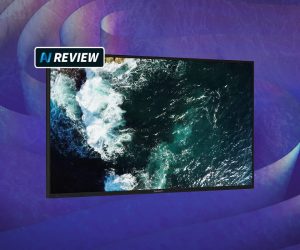
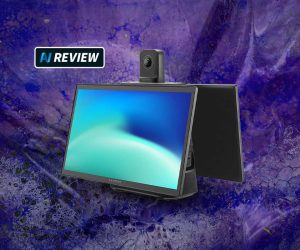


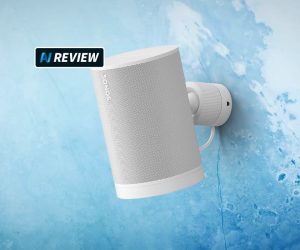
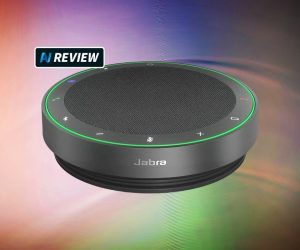
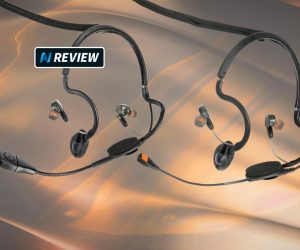


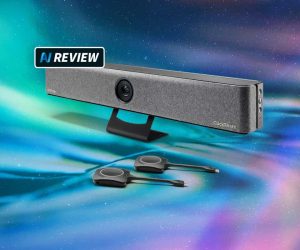
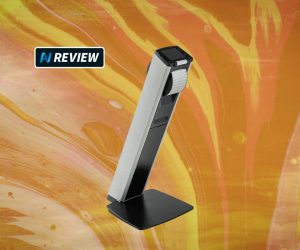



RESPONSES